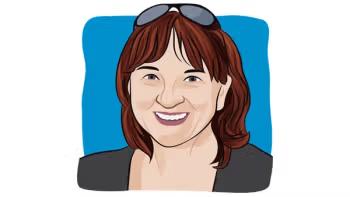
'Here Comes the Sun' and Innovation
Having hope in the now is really faith in the future.
"We made it. Let's get you in bed and I'll get you a warm rag," my mom would say after we made it back to our cozy little room at the Ronald McDonald House in Atlanta, Georgia.
"We made it," usually meant that we had managed to drive from the chemo clinic to the Ronald McDonald house without having to pull over on the side of the road so I could get sick. That was in 1985 and I was nine years old.
Back then, I never imagined that cancer treatment, mine anyway, would ever be any different. I was a kid of course, but cancer to me meant surgery, lots of radiation, chemotherapy and being dreadfully sick.
After treatment back then, I'd be loaded up in a wheelchair and pushed out to our car that was sitting in the roundabout. It was often a very interesting contrast. I can remember on several occasions being wheeled out of the clinic into a beautiful sunny day, but I knew what was to come. I knew that the opportunity to enjoy a sunny day would have to be set aside for another day.
Years later, I would have cancer again, and along with it, I would have cancer treatment. However, because of new drugs, my physical sickness from chemotherapy would become a much smaller issue for me. Heck, during chemo sessions, I'd actually be able to eat. Wait, what?
It was around this time that I saw the potential that lies in the future — and how new research, new medication, and new techniques could lead to much better experiences for people going through cancer.
Today, I think it's crucial for people to find hope in treatment advancements that are to come. It's important for us all not to become stuck in a moment in time where we feel our options are only limited to the present. While it's true for some patients that time might be a critical factor, still, technology and advancements are always in motion.
As for another great example of how technology with a little time has worked in my favor, not too long after my last bout with
Having hope in today's research and tomorrow's advancements. reminds me of a quote from Dean Kamen: "Every once in a while, a new technology, an old problem, and a big idea turn into an innovation."




